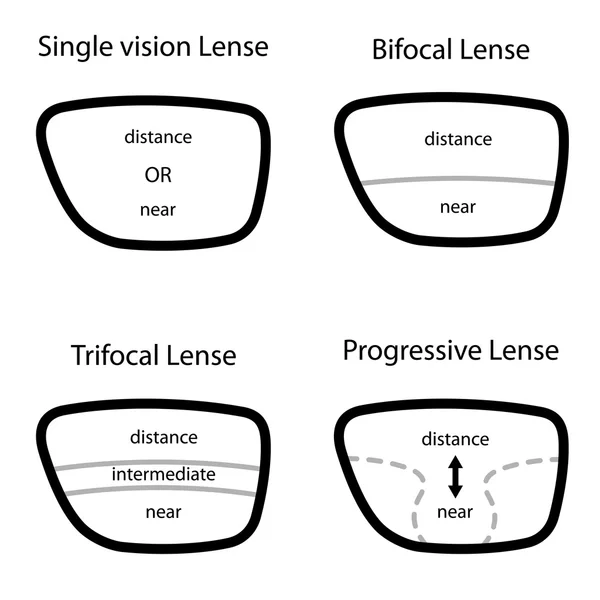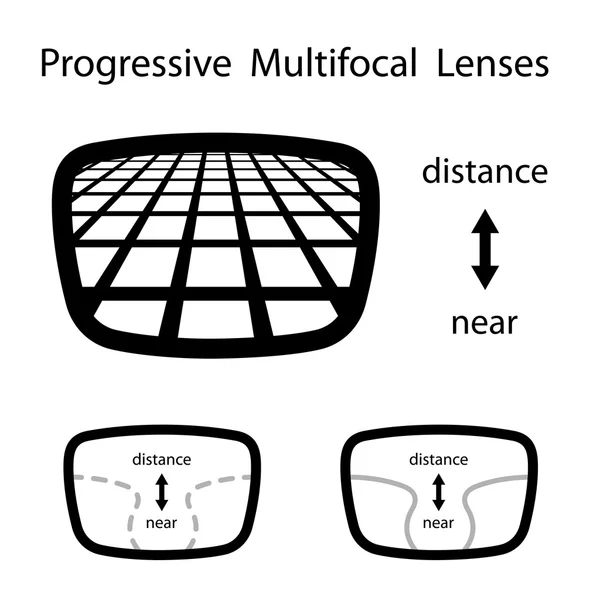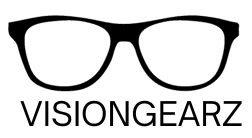Don't miss our holiday offer - up to 50% OFF!
Types of Reading Glasses
Reading glasses come in different types, each designed to address the user’s needs.
The main types are Single-vision, Bifocals, Trifocals, and Progressive Lenses.
Single Vision
Single-vision lenses are the simplest type of reading glasses. They have a single power throughout the entire lens.
This is because they are designed to correct vision for one specific distance–in this case for reading and close-up tasks.
How Single Vision Lenses Work:
- The magnification power is the same throughout the lens.
- They’re designed to focus on objects within arm’s length.
- They are commonly found over-the-counter.
Advantages of Single Vision Lenses:
- Simple and straightforward to use
- Often the most affordable option
- Lightweight and comfortable
- Great for dedicated reading or close-up work
Challenges with Single Vision Lenses:
- They need to be removed for distance viewing
- They may cause disorientation if worn while walking
Bifocal Lenses

Bifocal lenses have two distinct parts, and there is a visible line demarcating both parts. When you look through the top part, you can see things that are far away. When you look through the bottom, you can see things close to you.
Advantages of Bifocals
- They provide visual aids for both near and far objects.
- They are usually cheaper than other multi-focal lenses.
- Most people find them easy to use.
Challenges of Bifocals
While bifocals work well for many people, they have some drawbacks:
- The visible line can be bothersome to some wearers.
- There is no correction for intermediate distances.
Trifocal Lenses
Trifocals add a third area of focus, helping you to see clearly at three different distances.
Trifocal lenses have three distinctive parts:
- Top portion for far vision
- A middle for intermediate vision (useful for seeing objects like computer screens)
- The bottom part for near vision
Two visible lines separate these three sections.
Advantages of Trifocals
- They provide clear vision at near, intermediate, and far distances.
- They’re great for people who need to focus on objects at various distances throughout the day.
- They can be helpful for activities like using a computer or playing an instrument.
Challenges with Trifocals
Like bifocals, trifocals have some disadvantages:
- The visible lines can be more noticeable than in bifocals.
- For some people, it takes some time to get accustomed to three different focus areas.
- The intermediate section is often quite narrow, which can limit its usefulness.
Progressive Lenses

Progressive lenses provide a smooth transition between different focusing powers.
They work like this:
- The top part aids long-distance vision.
- It helps in intermediate vision through the middle area.
- The bottom part aids in close-up vision.
Unlike bifocals and trifocals, there are no apparent lines on progressive lenses. The transition in focus is accomplished gradually as your eye moves down the lens.
Advantages of Progressive Lenses
- They provide clear vision at different distances without any visible lines.
- They provide a more natural visual experience.
- They reduce the need for multiple pairs of glasses.
Challenges of Progressive Lenses
- They are generally more expensive than bifocals or trifocals.
- Some people experience a slight blurring effect in their peripheral vision.
- There’s an adjustment period needed to adapt to the use of the different parts of the lens.
Choosing the Right Type of Reading Glasses

When choosing the right type of reading glasses, the following should be considered:
Your Needs
Think of your daily activities:
- Would you say that you primarily need assistance with reading?
- Do you spend much time at the computer?
- Do you frequently switch between looking at near and far objects?
Your Lifestyle
Consider how you spend your time:
- If you only need glasses for reading, then you may need only single-vision lenses.
- If you’re often outdoors, you might prefer bifocals for their simplicity.
- If you are sitting at the desk all day, trifocals or progressives will serve you better.
Your answers to these questions can help guide your choice.
When to Choose Each Type
Here’s a quick guide to help you decide:
Choose Single Vision If:
- You only need help either to read or with your close-up tasks.
- You do not mind removing your glasses for distance vision.
- You’re looking for the most affordable and straightforward option.
Choose Bifocals If
- You primarily need help with reading and seeing far away.
- You don’t mind having visible lines across your lenses.
- You’re looking for a cost-effective option.
Choose Trifocals If:
- You need clear vision at three distinct distances.
- You don’t mind visible lines on your lenses.
- You spend a lot of time using a computer or performing tasks at arm’s length.
Choose Progressive lenses if:
- You want to have clear vision at all distances without visible lines.
- You are willing to pay a bit more for advanced lens technology.
- You do not want others to know that you are wearing multi-focal lenses.
